Heading out the door? Read this article on the new Outside+ app available now on iOS devices for members! Download the app.
Reading mantras in Sanskrit, the ancient language of India, can certainly be intimidating. (How exactly do you pronounce śāntiḥ again?) The good news is you don’t need to memorize a sonnet-length mantra to experience positive results. Even a single-word mantra, such as om, can be powerful. And when you’re ready to practice longer mantras, studying their translations and the meanings behind them can help you memorize the words over time.
The Significance of Practicing Sanskrit Mantras
Think of a mantra as a mental instrument that fine-tunes your yoga practice. “Incorporating mantras into practice can help to make it sacred and take it out of the realm of the physical and into a higher state of awareness,” says Zoë Slatoff-Ponté, author of Yogavataranam: The Translation of Yoga.
It is believed that each chakra has a particular vibration and that certain mantras can resonate with and harmonize that energy. “A mantra is a much more complex concept than a mere chant,” says Risha Lee, former curator of Exhibitions at the Rubin Museum of Art in New York City. “It unites sound, body, and mind in a deeply philosophical experience.” As you experience the numinous nature of the sound, you can cultivate a sonic presence that can feel liberating.
Mantras are a yoga tool you can use to calm your mind anywhere, anytime. Feeling stressed, lonely, anxious, or excited? Pick a word, phrase, or invocation and chant it in a way that works for you: loudly, softly, or even internally. To reap the most benefits, it is believed that shorter mantras should be chanted 108 times (mala beads can help you keep track) and longer mantras can be repeated up to three times. As you practice, focus your attention on the sound.
“The pronunciation of mantras is very important,” Slatoff-Ponté says. “Ideally, one learns the correct pronunciation from a teacher, who can also recommend a specific mantra for you.” But you can also explore mantras independently.
13 Essential Yoga Mantras and Chants
Each of the mantras below offers a different meaning and intention to align with whatever energy you’re looking to channel. Some are in Gurmukhi, a sacred script used in Kundalini yoga.
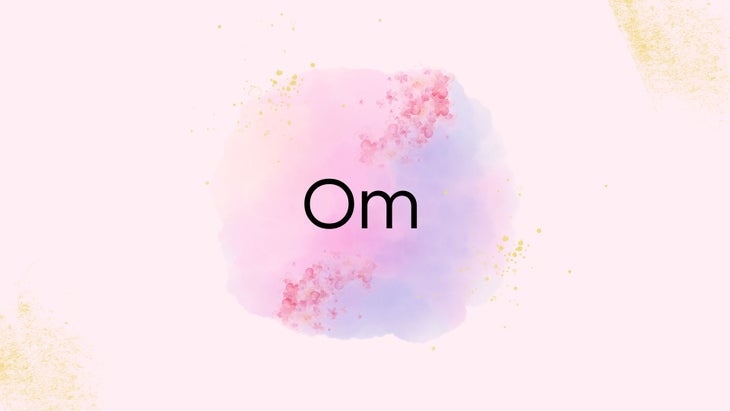
1. Om
Pronunciation: A-U-M
Why we chant it: In yoga tradition, om is considered to be the first sound heard at the creation of the universe. When each letter is pronounced fully, you can feel the energy of the sound lifting from your pelvic floor all the way up through the crown of your head. The droning sound of om is said to unblock the throat chakra, which can lead to more attuned communication with others.
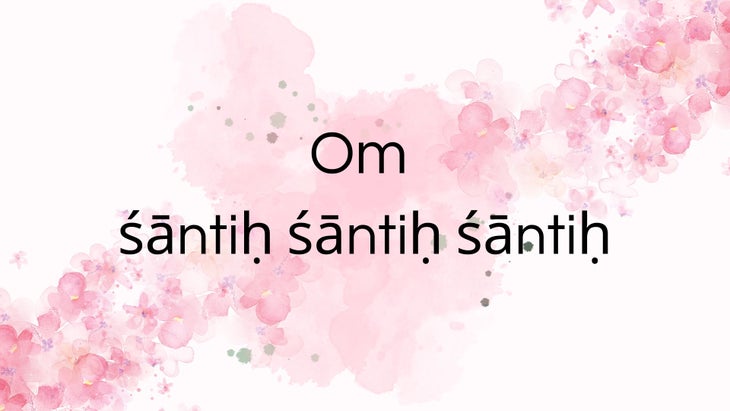
2. Shanti Mantra: A Chant for Peace
Pronunciation: sarvesham svastir bhavatu | sarvesham shantir bhavatu | sarvesham purnam bhavatu | sarvesham mangalam bhavatu
Translation:
May there be well-being for all,
May there be peace for all.
May there be wholeness for all,
May there be happiness for all.
—Translation by Zoë Slatoff-Ponté
Why we chant it: It promotes peace within ourselves and among those around us.
Shorter version:
The mantra: Om śāntiḥ śāntiḥ śāntiḥ
Pronunciation: A-U-M shanti shanti shanti
Translation: Om, peace, peace, peace
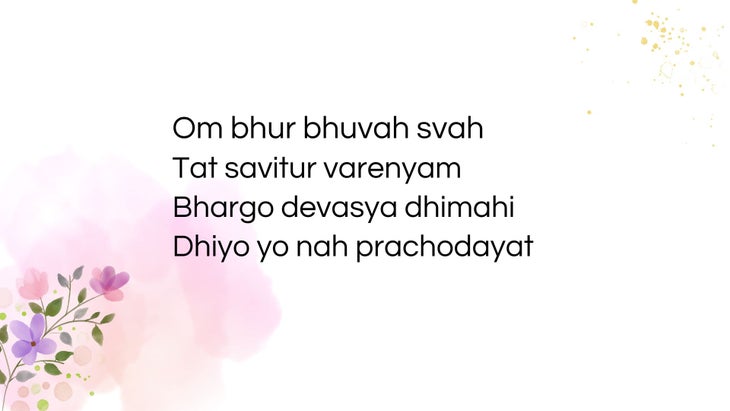
3. Gayatri Mantra
Pronunciation: Om bhur bhuvah svah | tat savitur varenyam | bhargo devasya dhimahi | dhiyo yo nah prachodayat
Translation:
Earth, Heaven, the Whole Between.
The excellent divine power of the Sun.
May we contemplate the radiance of that god,
May this inspire our understanding.
—Translation by Zoë Slatoff-Ponté
Why we chant it: This is considered one of the oldest Sanskrit mantras. It speaks to the unity of all creation, despite its many forms. Chanting it invokes the light of the sun and helps us to transcend suffering.
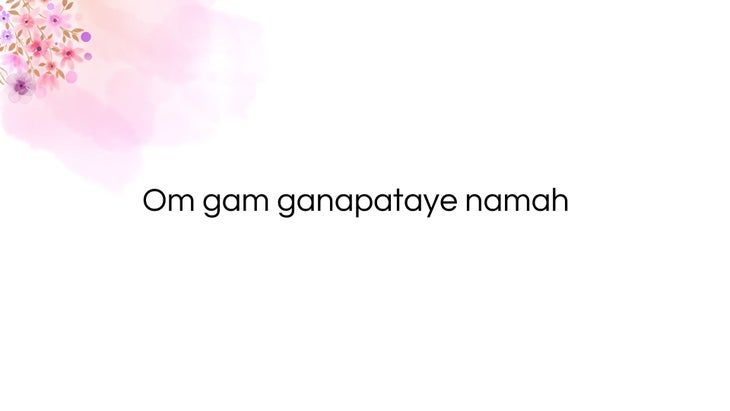
4. Invocation to Ganesha
Pronunciation: Om gam ganapataye namah | vakra-tunda maha-kaya surya-koti-sama-prabha | nirvighnam kuru me deva sarva-karyeshu sarva-da
Translation:
Salutations to Ganesha.*
O Ganesha, god with a curved trunk, of great stature,
Whose brilliance is equal to ten million suns.
Grant me freedom from obstacles,
In all things, at all times.
—Translation by Zoë Slatoff-Ponté
*The first line is a bija mantra that can be chanted separately.
Why we chant it: Ganesha is the god of wisdom and success and the remover of obstacles. It is always a good idea to begin any new endeavor by invoking this Hindu deity.
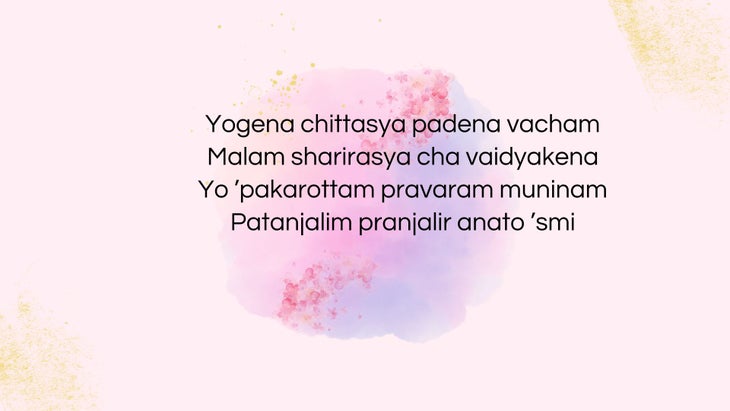
5. Invocation to Patanjali, Author of The Yoga Sutras
Pronunciation: yogena chittasya padena vacham malam sharirasya cha vaidyakena | yo ’pakarottam pravaram muninam patanjalim pranjalir anato ’smi
Translation:
With palms folded together,
I bow respectfully to Patanjali, the best of sages,
Who dispels the impurities of the mind with Yoga,
Of speech through Grammar, and of the body by means of Medicine.
—Translation by Zoë Slatoff-Ponté
Why we chant it: This mantra invoking Patanjali, one of the forefathers of the yoga tradition, is often chanted at the beginning of Iyengar yoga classes or as an introduction to chanting The Yoga Sutras. Try it at the beginning of your practice as a way to honor the ancient tradition and give thanks to the lineage of teachers. This chant also reminds us that yoga is meant to purify the mind, Ayurvedic medicine can promote health within the body, and that our speech (and also our breath) is fundamental.
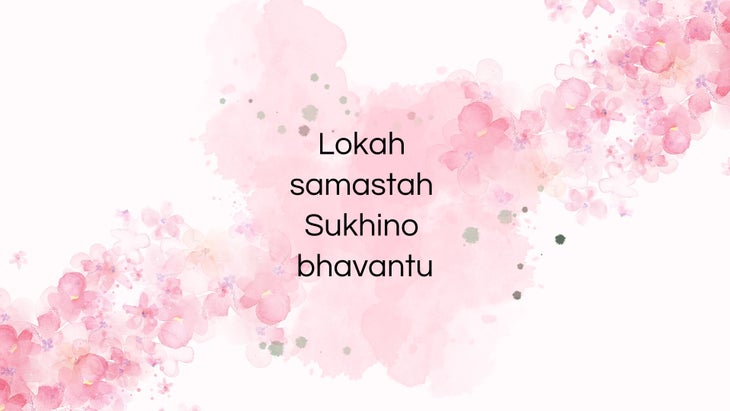
6. Mangala Mantra
Pronunciation: svasti prajabhyah paripalayantam nyayena margena mahim mahishah | gobrahmanebhyah shubham astu nityam lokah samastah sukhino bhavantu
Translation:
May the rulers of the earth protect the well-being of the people,
With justice, by means of the right path.
May there always be good fortune for all living beings.
May all the inhabitants of the world be full of happiness.*
—Translation by Zoë Slatoff-Ponté
*The last line is a bija mantra that can be chanted separately.
Why we chant it: It represents auspiciousness and good fortune for all. If you often dedicate your practice or meditation to someone, this one’s for you.
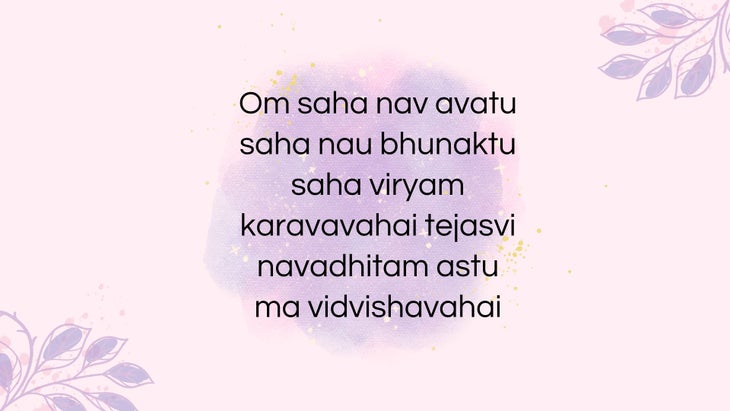
7. Chant from the Upanishads, a Collection of Ancient Indian Philosophical and Religious Texts
Pronunciation: Om saha nav avatu | saha nau bhunaktu | saha viryam karavavahai | tejasvi navadhitam astu ma vidvishavahai | Om shanti shanti shanti
Translation:
May we together be protected,
May we together be nourished.
May we work together with vigor,
May our study be illuminating.
May we be free from discord.
Om Peace, Peace, Peace!
—Translation by Zoë Slatoff-Ponté
Why we chant it: This mantra is often recited at the beginning of a joint study or venture, making it a good option if you’re looking to anchor your yoga practice in the present moment or embrace a new opportunity, be it a job or a relationship.

8. Chant from the Brihadaranyaka Upanishad, One of the Oldest Sanskrit Texts
Pronunciation: asato ma sad gamaya | tamaso ma jyotir gamaya | mrityor ma amritam gamaya
Translation:
From the unreal to the Real, lead me.
From darkness to Light, lead me.
From death to Immortality, lead me.
—Translation by Zoë Slatoff-Ponté
Why we chant it: This mantra represents peace and freedom. As we all know, freedom can mean different things to different people. Experiencing it, even by the edges, can give you a sense of incredible levity.
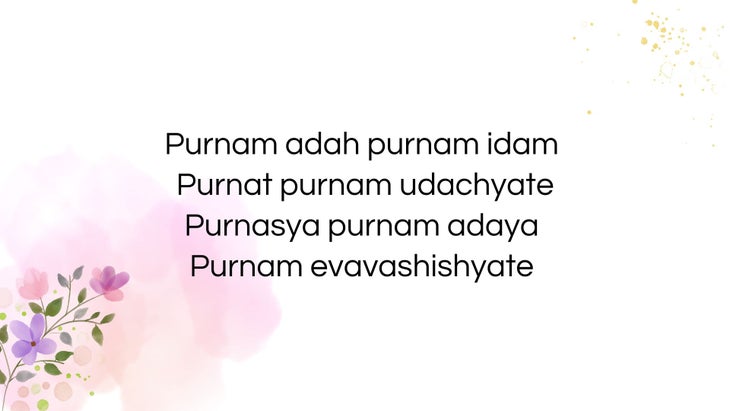
9. The Opening Invocation of the Isha Upanishad, a Sanskrit Text That Delves Into the Knowledge of the Self
Pronunciation: purnam adah purnam idam purnat purnam udachyate | purnasya purnam adaya purnam evavashishyate
Translation:
That is Whole. This is Whole.
The Whole arises from the Whole.
Having taken the Whole from the Whole,
Only the Whole remains.
—Translation by Zoë Slatoff-Ponté
Why we chant it: This passage expresses the fundamental idea that the One and the Many are the same; the visible and the invisible, the microcosm and the macrocosm are both the Whole. Simply put—we are One. When you feel alone or misunderstood, this mantra can help you refocus your thoughts.
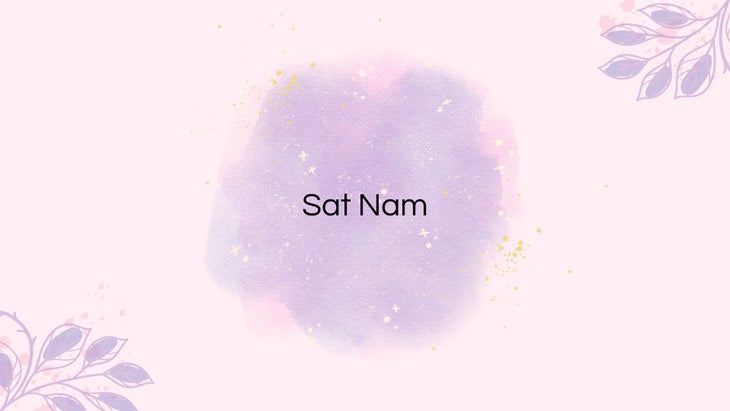
10. Sat Nam
Pronunciation: Saaaaaaaat* | Nam
*Sat is extended eight times longer than Nam. If you really want the mantra to radiate from the base of your spine to the center of your head, make the Sat 35 times longer than the Nam.
Translation: Truth is my name.
Why we chant it: Used in the Kundalini yoga practice, Sat Nam can be a way to reconnect with your intuition. The Gurmukhi mantra is also part of the Sat Kriya meditation, which is believed to help reinvigorate sexual energy when practiced daily.
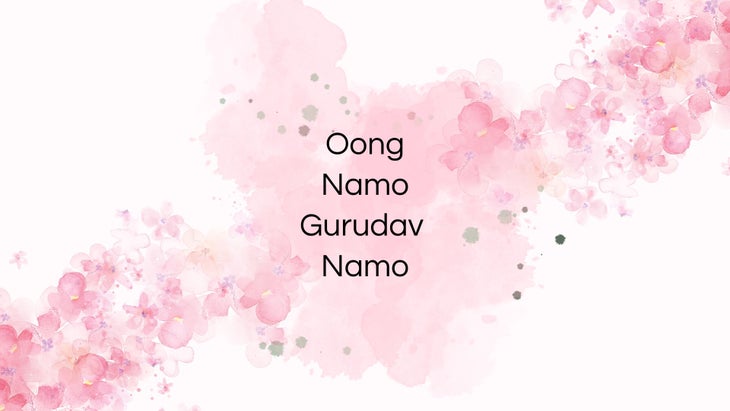
11. Adi Mantra
Pronunciation: Oong namo | Gurudav namo
Translation:
I bow to the creative energy of the infinite.
I bow to the Divine channel of wisdom.
Why we chant it: This Gurmukhi mantra opens the communication channel between the student and the divine teacher. It’s believed to open us to new endeavors and give us the strength to try something new.
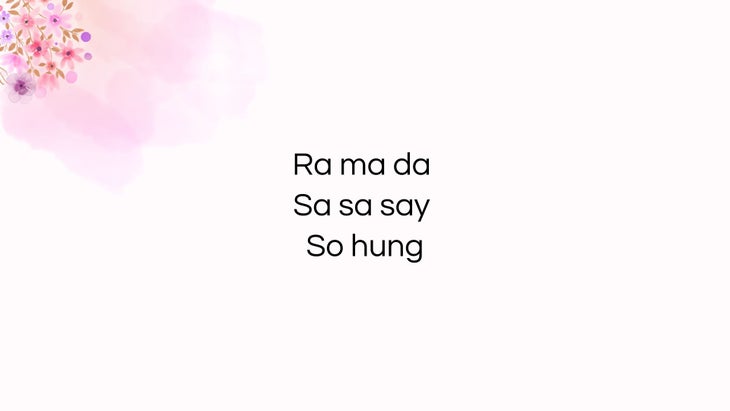
12. Siri Gaitri Mantra
Pronunciation: Ra Ma Da Sa Sa Say So Hung
Translation:
Sun, Moon, Earth, Infinity, All that is in infinity, I am Thee.
Why we chant it: It’s used as a restorative meditation to send healing energy to ourselves and others. In Kundalini yoga, the pose that accompanies this meditation is considered as important as the sound. Sit comfortably with your elbows bent and pressed against your sides, palms facing up.
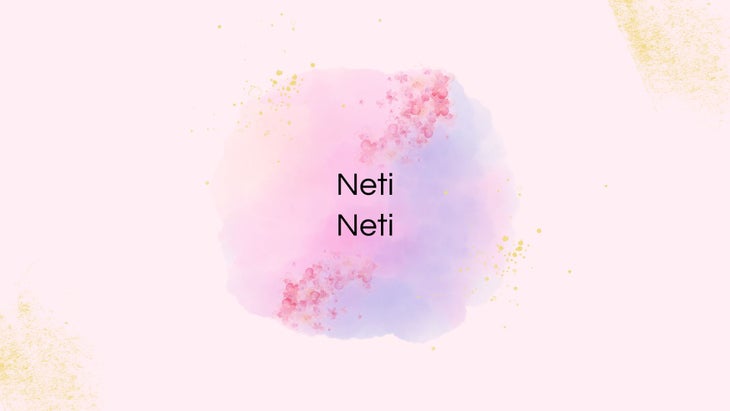
13. Neti-Neti
Pronunciation: Neti neti
Translation:
Not this, not this.
Why we chant it: The phrase is a way to rebut something—be it harsh words or a situation in your life you would like to change.
This article has been updated. Originally published February 26, 2016.